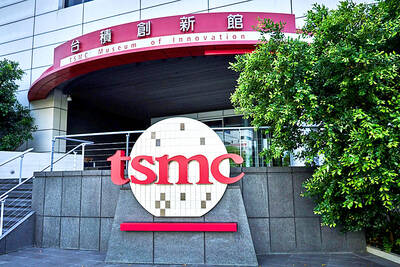Taiwan’s emergence as an energy investment destination could create new openings for Taiwanese companies far beyond the energy sector, as Asia’s thriving economies need energy, international law firm White & Case LLP said in a report yesterday.
The government aims to end nuclear power generation by 2025, by which time 20 percent of electricity should be generated from renewable sources and 50 percent from natural gas.
Offshore wind is a key component of the plan, with ambitions to install 5.5 gigawatts of offshore wind capacity by 2025.
With the growing cost efficiency of renewable energy and the emerging viability of battery storage technology, energy generation is nearing an inflection point, the consultancy said, adding that the shifting market dynamic in the oil-and-gas sector has seen liquid natural gas-to-power emerge as a viable alternative to coal-fired power generation in Asia.
Lower barriers to entry in renewables have given rise to a new breed of developers and investors who compete confidently against the traditional energy utilities and drive innovation in technology, development strategy and capital, it said.
Interest from international investors and financiers in the Taiwanese offshore wind sector has been intense, with market participants enthusiastically jockeying for position, it said.
Factors that help differentiate the local offshore wind sector from other Asian markets include strong government commitment, a transparent pipeline of opportunity, attractive feed-in tariffs and the potential for Taiwan to serve as a foothold for firms looking to build a presence in other emerging offshore wind markets in Asia, the consultancy said.
The investment-grade creditworthiness of Taiwan Power Co (Taipower, 台電) also lends significant support to the industry, it said.
In addition, there is no competition from firms from China, the largest offshore wind market in Asia and the third-largest in the world, White & Case said.
Still, a gap remains between ambition and practical delivery in the region, most noticeably because of slow and opaque approval processes, it said, adding that a lack of coordination among government authorities has also led to disappointments.
A key aspect of international involvement in the Taiwanese offshore wind sector is the pursuit of limited-recourse project finance, it said.
This means that financiers lend solely on the basis of the project and its cash flows, without additional financial guarantees from the project developer, it said.

SEEKING CLARITY: Washington should not adopt measures that create uncertainties for ‘existing semiconductor investments,’ TSMC said referring to its US$165 billion in the US Taiwan Semiconductor Manufacturing Co (TSMC, 台積電) told the US that any future tariffs on Taiwanese semiconductors could reduce demand for chips and derail its pledge to increase its investment in Arizona. “New import restrictions could jeopardize current US leadership in the competitive technology industry and create uncertainties for many committed semiconductor capital projects in the US, including TSMC Arizona’s significant investment plan in Phoenix,” the chipmaker wrote in a letter to the US Department of Commerce. TSMC issued the warning in response to a solicitation for comments by the department on a possible tariff on semiconductor imports by US President Donald Trump’s

The government has launched a three-pronged strategy to attract local and international talent, aiming to position Taiwan as a new global hub following Nvidia Corp’s announcement that it has chosen Taipei as the site of its Taiwan headquarters. Nvidia cofounder and CEO Jensen Huang (黃仁勳) on Monday last week announced during his keynote speech at the Computex trade show in Taipei that the Nvidia Constellation, the company’s planned Taiwan headquarters, would be located in the Beitou-Shilin Technology Park (北投士林科技園區) in Taipei. Huang’s decision to establish a base in Taiwan is “primarily due to Taiwan’s talent pool and its strength in the semiconductor

An earnings report from semiconductor giant and artificial intelligence (AI) bellwether Nvidia Corp takes center stage for Wall Street this week, as stocks hit a speed bump of worries over US federal deficits driving up Treasury yields. US equities pulled back last week after a torrid rally, as investors turned their attention to tax and spending legislation poised to swell the US government’s US$36 trillion in debt. Long-dated US Treasury yields rose amid the fiscal worries, with the 30-year yield topping 5 percent and hitting its highest level since late 2023. Stocks were dealt another blow on Friday when US President Donald

UNCERTAINTY: Investors remain worried that trade negotiations with Washington could go poorly, given Trump’s inconsistency on tariffs in his second term, experts said The consumer confidence index this month fell for a ninth consecutive month to its lowest level in 13 months, as global trade uncertainties and tariff risks cloud Taiwan’s economic outlook, a survey released yesterday by National Central University found. The biggest decline came from the timing for stock investments, which plunged 11.82 points to 26.82, underscoring bleak investor confidence, it said. “Although the TAIEX reclaimed the 21,000-point mark after the US and China agreed to bury the hatchet for 90 days, investors remain worried that the situation would turn sour later,” said Dachrahn Wu (吳大任), director of the university’s Research Center for